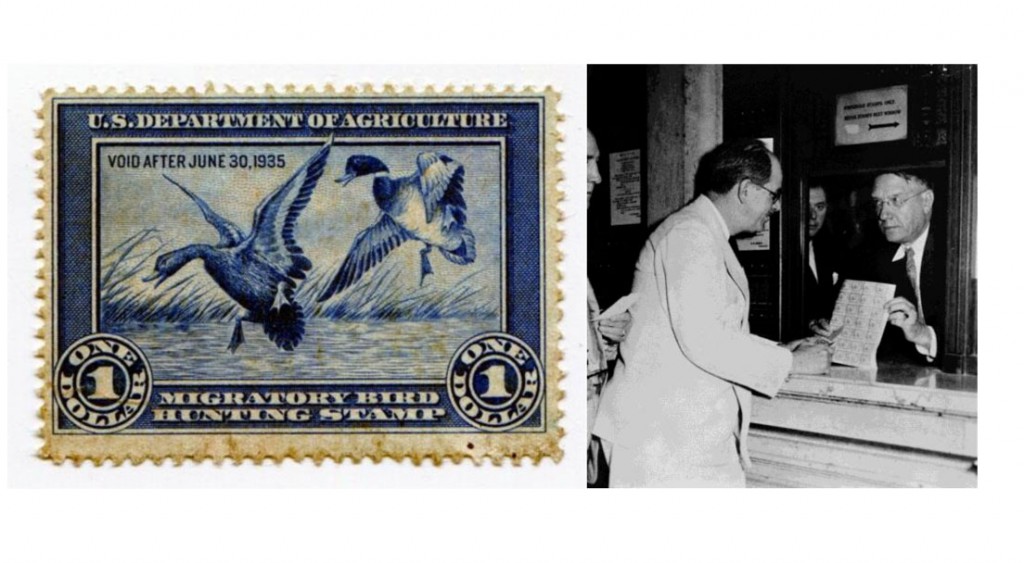The Very First Day of Sale for the Stamp – August 22, 1934
After years of controversy, a Congressional bill to fund wetland and waterfowl conservation gained ground in the early 1930s. Starting in 1931, a pair of bills to establish a federal funding stamp was getting serious attention. Congressional hearings on the subject in April, 1932 seemed to resolve the debate over how to collect the funds and in what fashion these funds would be spent.

The new bill passed and was signed into law by President Franklin Delano Roosevelt in March, 1934. With Roosevelt’s signing of the Migratory Bird Hunting Stamp Act, popularly known as the Duck Stamp Act, funds from stamp sales would be deposited in a special treasury account, the Migratory Bird Conservation Fund (MBCF).
Just ten days before the bill signing, artist and conservationist Jay Norwood “Ding” Darling was appointed the Chief of the Bureau of Biological Survey by FDR. The artwork for the very first stamp (1934-1935) soon followed, showing a pair of landing Mallards. Darling provided six model sketches for the Bureau of Engraving and Printing, all produced on laundry cardboard stiffeners that were in Darling’s office. Darling approached these works of his as concepts, but the engravers actually chose one and began stamp production. The one chosen had been created by Darling in about an hour.
The first day of sale was August 22, 1934. In the first year, 635,000 stamps were sold at $1 apiece. The revenue generated from the stamp was directed to the Department of the Agriculture for wetland conservation.
The rest, as they say, is history.